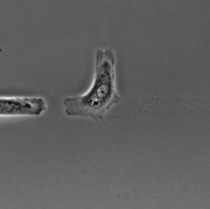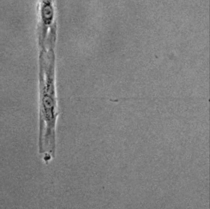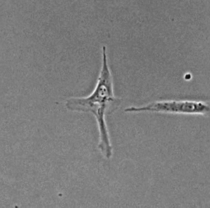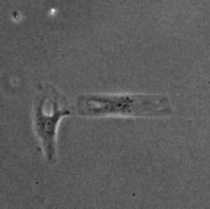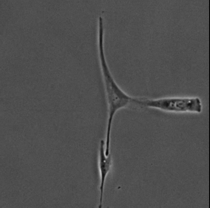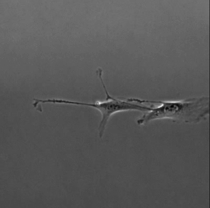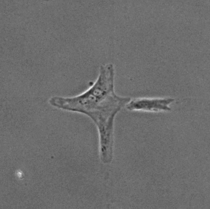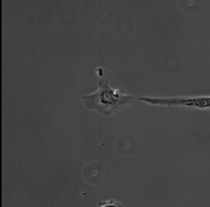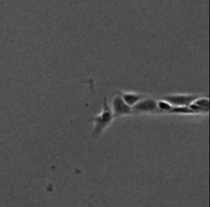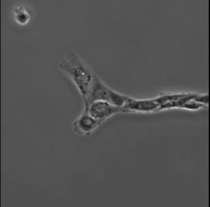| Overview | Cell Structures | Cell Migration | Cell Division |
Cell-Cell Contact Mediated Coordination of Cell Migration: Contact Following and Contact Inhibition of Locomotion |
Li and Wang, Proc. Natl. Acad. Sci. USA 105:10678-10683 (2018) |
Cell–cell contact-mediated responses play key roles in coordinating cell migration, which is conventionally described in terms of repulsive responses of contact inhibition of locomotion (CIL). However, many aspects of collective migration are not fully recapitulated by repulsive responses. As repulsive responses have been found to arise from collisions between the heads of approaching cells, we hypothesize that cells exhibit different responses upon contact with other regions of a neighbor. Based on studies of tail-following in Dictyostelium discoidium, it is reasonable to hypothesize that contact with the tail regions of neighboring cells may induce a different response. The following videos, recorded on micropatterned substrates to facilitate cell-cell contact, indicate a following behavior, which we term contact following of locomotion, upon head-tail contact. Each video starts with a still image showing the micropattern. The scale bar indicates 50 μm. |

